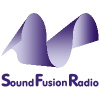Information taken from Wikipedia.
Jazz-funk is a subgenre of jazz music characterized by a strong back beat (groove), electrified sounds,[1] and an early prevalence of analog synthesizers. The integration of funk, soul, and R&B music and styles into jazz resulted in the creation of a genre whose spectrum is quite wide and ranges from strong jazz improvisation to soul, funk or disco with jazz arrangements, jazz riffs, jazz solos, and sometimes soul vocals.[2]
Overview[edit]
Jazz-funk has basic harmonic structure and jazz men can performance improvisation[3].An extension of the jazz field, jazz-funk exhibits distinctive characteristics. One characteristic is the shift of proportions between composition and improvisation. Arrangements, melody, and overall writing were heavily emphasized. In a nutshell this is a departure from funky jazz and free jazz back to the street funk movement of the era.
Pre-history[edit]

Early 1960s James Brown created “pure funk“, a genre that created this groovy rhythm,[4] which was played by James Brown’s funky drummers Clyde Stubblefield and John “Jabo” Starks.[5]
History[edit]
Examples of early jazz funk albums were Miles Davis’ On the Corner (1972)[6] and Jimmy Smith’s Root Down (1972). The Last Poets, Gil Scott-Heron, Lightnin’ Rod, T.S. Monk, Pleasure, Boogaloo Joe Jones, Lenny White,[7] Don Blackman, Ramon Morris, Monk Higgins, Wilbur Bascomb,[8] and Les DeMerle[9] and Michael Henderson[10] also released jazz funk albums. Miles Davis, Donald Byrd[11] and Herbie Hancock influenced on jazz funk. The Mizell Brothers are being listened to jazz funk fans. Their work has also been sampled in modern music.
Jazz-funk dance is directly related to the genre, with Jennifer Lopez popularizing it in the sketch comedy television series In Living Color.[12]
At its conception, the jazz-funk genre was occasionally looked down upon by jazz hard-liners as a sell-out, or jazz for the dance halls. It was insubstantially presumed by these to be not intellectual or elite enough, which led to controversy about the music crossing over, but it was making jazz much more popular and mainstream.[13]
From a pop audience perspective, the ambivalence towards the jazz-funk genre arose – despite commercial success – because it was “too jazzy” and therefore too complex.[14]
Many mainstream artists in jazz used the talents of a few producers who were specialists in the genre and generated great commercial success. The Mizell Brothers, Larry and Fonce, produced many jazz-funk artists such as the Blackbyrds, Donald Byrd, Johnny “Hammond” Smith, Gary Bartz, and more.[15] Other producers included Philly musician Dexter Wansel, generally acclaimed musicians (especially arrangers) themselves who tried their hand at sound-engineer, arranger, or composer.
Nu jazz blends jazz-funk with other music such as EDM, techno, and house. German group Jazzanova is an example of nu jazz.[16]
UK jazz funk[edit]
See also: Brit funk
In the UK’s nightclubs of the mid to late 1970s, DJs like Colin Curtis in Manchester, Birmingham‘s Graham Warr and Shaun Williams, and Leeds-based Ian Dewhirst and Paul Schofield championed the genre, along with Chris Hill and Bob Jones in the South.[17] In the mid to late 1970s, London-based muisc pioneers drew a new audience to the genre by pirate radio. In the late 1980s, the work of rare groove crate diggers–DJs in England who were interested in looking back into the past and re-discovering old tunes, such as Norman Jay and Gilles Peterson.
They were encouraged by club DJs like Chris Hill and Robbie Vincent, who was then on BBC Radio London, and Greg Edwards, who had a Saturday evening show on London’s first-ever commercial radio station, Capital Radio. They had a big jazz festival in 1980, and the jazz-funk band Light of the World performed in the Festival.[18] The first of these self-contained bands to establish a real UK identity was Light of the World, formed by Kenny Wellington,[19] Incognito, The Brand New Heavies, Jamiroquai, and the James Taylor Quartet helped the acid jazz movement surge in popularity. UK group US3 signed to Acid Jazz Records, which itself was founded by Peterson and Eddie Piller. US3 covered “Cantaloupe Island“, originally recorded by Herbie Hancock.

